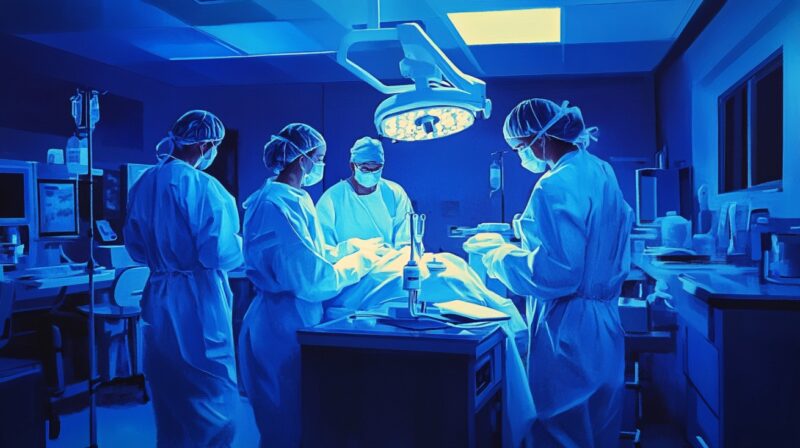How To Prepare For a Colonoscopy – What To Do Before & After
Colonoscopy plays a critical role in catching colorectal cancer at its earliest, most treatable stage.
Many people worry about discomfort or fear the unknown. Ironically, the hardest part isn’t the actual procedure—it’s the preparation.
A clear plan and accurate expectations can make the process far easier.
Let us talk about it in greater detail.
Planning Ahead (2+ Weeks Before the Procedure)
Getting ready for a colonoscopy begins well before the actual date. Once an appointment is confirmed, choose a day that gives you time to rest and recover.
Avoid scheduling anything strenuous immediately before or after. Your body needs to remain relaxed, and your schedule should allow for that.
Transportation must be arranged in advance. No exceptions are made when it comes to sedation, patients cannot drive afterward.
Even if you feel alert, reaction time and focus will be compromised. A responsible adult must accompany you to the facility and take you home safely.
Preparation also involves gathering essential supplies. Creating a checklist makes it easier to avoid last-minute store runs.

- Soft toilet paper – reduces irritation during frequent use
- Fragrance-free wet wipes – provide gentle cleaning
- Clear liquids – water, broth, and juice to support hydration during prep
- Electrolyte beverages – help replenish lost minerals
- Bowel prep kits – essential for intestinal cleansing
- Adult diapers or incontinence pads – helpful in case of urgency
- Barrier creams – protect skin from soreness and chafing
Medical consultation should not be delayed. Talk to your doctor about any ongoing medical conditions, especially if you manage:
- Diabetes or insulin use
- High blood pressure
- Kidney disease
- Heart conditions or history of heart disease
Medication adjustments may be necessary. Blood thinners, iron supplements, and even some herbal remedies can interfere with the safety and accuracy of the procedure.
Your healthcare provider will offer specific instructions based on your medical profile.
Diet Adjustments (3–4 Days Prior)

Shifting to a low-fiber, easily digestible diet helps shrink stool bulk and makes it easier for the bowel-cleansing process to succeed.
A clean colon allows doctors to detect abnormalities without obstruction or interference.
Starting several days before the colonoscopy improves outcomes and lowers the chance of rescheduling due to poor prep. A few days of strict eating rules are far less trouble than repeating the entire process.
- White rice
- White bread or plain toast
- Eggs (boiled, poached, or scrambled with minimal fat)
- Lean meats like skinless chicken or turkey
- Fish prepared without heavy seasoning or coating
- Well-cooked vegetables without skins, seeds, or rough textures
- Plain pasta or noodles without sauces
Avoid anything high in fiber, rough, or hard to digest. Certain items can leave residue in the colon or stain it, leading to misinterpretation during the exam.
- Whole grains like oats, brown rice, and quinoa
- Raw vegetables, especially leafy greens, corn, or broccoli
- Beans, lentils, peas, and chickpeas
- Seeds, nuts, and popcorn
- Tough meats or anything deep-fried
- Snacks or drinks dyed red, purple, or blue (gelatin, sports drinks, candies)
Some people forget about over-the-counter supplements and medications, which also play a role in preparation.
Fiber supplements, iron pills, and certain anti-inflammatories may interfere with the cleanse or pose risks during the procedure. Stop using any of them only under your doctor’s guidance.
The Day Before the Colonoscopy
Preparation intensifies on the day before the colonoscopy. All solid foods must be eliminated.
Meals transition entirely to clear liquids, and maintaining proper hydration becomes a top priority.
Certain colors and consistencies interfere with visibility during the procedure, so clarity is the rule of thumb. Approved liquids provide energy and fluid while keeping the bowel clean.
- Water (plain or flavored, as long as it’s clear)
- Herbal teas (no milk or creamer)
- Apple juice or white grape juice
- Clear broths (chicken, beef, or vegetable)
- Lemon-lime gelatin (no added fruit or toppings)
- Ice pops (avoid any with pulp or opaque textures)
Avoid items that can alter colon visibility or mimic blood during examination.
- Milk or any dairy-based products
- Orange juice, tomato juice, or anything pulpy
- Alcohol of any kind
- Any liquid or gelatin that is red, purple, or blue in color

Bowel cleansing usually starts later in the day, typically in the afternoon or evening.
In many cases, doctors recommend split dosing, where half of the prep solution is taken the night before and the rest in the early hours of the morning.
It improves the effectiveness of the cleanse and increases the chances of a complete, unobstructed view during the procedure.
Several types of bowel prep kits are used. Though they differ in formulation, all aim to clear the colon entirely.
- PEG (polyethylene glycol–based)
- OSP (oral sodium phosphate)
- Saline-based formulas
- Combination or hybrid options
Drinking large amounts of these solutions can be unpleasant. The texture, taste, and sheer volume can cause nausea or gagging. Small adjustments help ease the process and improve tolerability.
Day of the Colonoscopy

Preparation reaches its final stage on the day of the procedure. Precision and timing matter. All fluid intake must stop 2 to 4 hours before your scheduled arrival time. Specific timing depends on the instructions provided by your healthcare team.
Nothing should be consumed after the cutoff—not even water or chewing gum.
Arrive with your support person. Driving or commuting alone is not an option. Sedatives will impair your reflexes and awareness, making it unsafe to navigate transportation independently.
Medical facilities often refuse to begin the procedure unless someone is available to accompany you afterward.
- Conscious sedation: Light sedation that allows you to remain responsive but relaxed and pain-free
- Full anesthesia: Complete sleep with no awareness during the procedure
Colonoscopy typically lasts between 20 and 60 minutes. The scope, a flexible tube with a camera, is inserted through the rectum and guided through the colon to examine its lining.
Doctors may identify and remove abnormal growths known as polyps. Tissue samples might also be collected during the procedure for closer examination.
- You will be positioned on your side with knees drawn up
- Sedation will be administered through an IV line
- The doctor will insert the scope slowly and carefully
- If polyps are detected, they may be removed with tiny tools inside the scope
- Biopsies may be taken if areas look suspicious
Recovery After the Procedure
Remain in the recovery area until medical staff clears you to leave. Sedation affects motor skills and mental clarity long after you regain consciousness.
Feeling awake does not equal being fully functional. Judgment, balance, and coordination take several hours to return to normal.
Going home alone is not safe. You must have a responsible adult accompany you and remain with you for several hours.
Expect several common aftereffects once the sedation wears off.
- Grogginess or lightheadedness
- Delayed reflexes and drowsiness
- Mild bloating or gas
- Abdominal cramping
- A small amount of rectal bleeding, especially if polyps were removed
These effects tend to subside within a few hours, though light cramping and fatigue can linger through the day.
Lying down and resting is encouraged. Avoid work, driving, or making any important decisions.
Ease your way back into normal eating habits. Digestive sensitivity is common, especially after a thorough bowel cleanse and sedation.
Starting slowly with easy-to-digest foods minimizes discomfort.
- Clear soups
- Boiled white rice
- Mashed potatoes
- Scrambled or soft-boiled eggs
- Applesauce or bananas
Wait to reintroduce fibrous foods, greasy meals, or alcohol until the next day or until cleared by your doctor. In cases involving polyp removal or biopsy, your provider may offer more specific dietary guidelines. Follow those instructions closely to reduce the risk of complications.

Final Tips and Reassurance
Success hinges on following instructions closely. The prep may feel inconvenient, but skipping steps can lead to incomplete exams and the need to repeat the process.
Most people are surprised by how simple the procedure itself feels. Discomfort tends to come during prep, not the colonoscopy.
Results can catch cancer early or confirm a clean bill of health. Don’t delay it—early detection saves lives.



